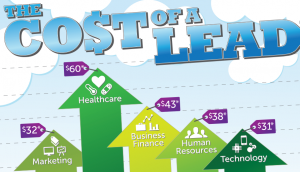Customer Lead Generation Process Vs. On-Demand Lead Generation Process: Key Differences
The lead generation process is an exemplary way to ensure that you have a pipeline ready full of potential customers. However, it’s often interchangeably used with the on-demand lead generation process. Although both terms sound the same, they are quite different in terms of approaching the leads. Let’s start with clarifying the differences between on demand and customer lead generation process to ensure that you never ever make a mistake between the two terms.
Customer Lead Generation Process
Lead generation is the traditional process of creating a sales funnel to convert prospects into customers. In this process, the warmest prospects are targeted through the system, and the firm aims to make the prospects take some action, i.e., sale. Oftentimes, these prospects know about the product and require an incentive to purchase. The following is the depiction of the typical lead generation process flow. Let’s briefly look over the steps involved in this process.
1. Know Your Audience
The first step begins with knowing who you will target. You cannot just ignore your audience and run your ads on unknown people. Hence, it’s important to create a customer profile by identifying the relevant characteristics such as income, gender, location, occupation, and age. Secondly, identifying your audience’s social channels will help you keep in touch with them and know their preferences.
2. Content Creation
Once you know your audience, you must create attractive and valuable content to educate and convert them. Plus, people interested in your product would just want a sales ad and an attractive sales page that will compel them to take action. Hence, you must create engaging landing pages to direct your customers to purchase the product.
3. Publish Your Content
All your social media channels are the perfect platform for sharing the content. Hence, you must run ads and publish your valuable content on the preferred platform of your audience. For example, for B2B purposes, LinkedIn might be a suitable place to attract business professionals.
4. Nurture Leads
Interested people may share their emails to receive updates from you. Hence, it’s your chance now to nurture them through follow-up calls and targeted emails.
5. Lead Scoring
Some leads are valuable for your business. Hence, you can filter them out using scoring based on metrics such as website visits, interactions, and emails engagement. Check out this typical scoring model by the sales panel.
6. Over to Sales Team
Till now, you have converted the subscriber into a potential lead. It’s time to convert their desire into action. Hence, the sales team will make that possible by enriching the experience of the leads.
7. Review Your System
After all, you should check the viability of your system by comparing it against the targets after some time. If they are low, you must check for fallacies and change your interaction tools.
On-Demand Lead Generation Process
Demand generation is a different ballgame altogether. Here, you’ll target the majority of the audience who are strangers and don’t know about your product. They have a need to fulfill but cannot find the right product. Therefore, on-demand lead generation will educate these customers and increase your brand awareness.
The process is quite the same as the traditional customer lead generation system. However, the difference is in interaction methods and motives. Here we will convert complete strangers. Let’s see what we can do to spark their interest.
1. Gated Content
Magnet Lead is generated when a prospect shares their email for gated content, i.e., valuable information about the industry or a product. It can include whitepapers, case studies, eBooks, newsletters, and webinars. Several interested people might give you their emails, contact numbers, and company names for such valuable info.
2. SEO-focused website
Incorporating SEO practices will get your website high on search ranking. So, suppose a customer searches content relating to your industry. If your website’s SEO is good, its chances of popping up will be higher, increasing the likelihood of the prospects purchasing the product from you.
3. Social Media
Social Media is a powerful way to get your word out. Good social media account management might increase the reach to a wider audience, who’ll learn about your business. Furthermore, good referrals and word of mouths can spread through social media, making people aware of your business.
Conclusion
On-demand and customer lead generation are not similar, but they are powerful ways to get customers to your business. Are you reading to skyrocket your sales and expand your customer base? Astoria company is at your service. We’ll design a custom lead generation system for your business that will promise high-quality leads.
Reach out today!








